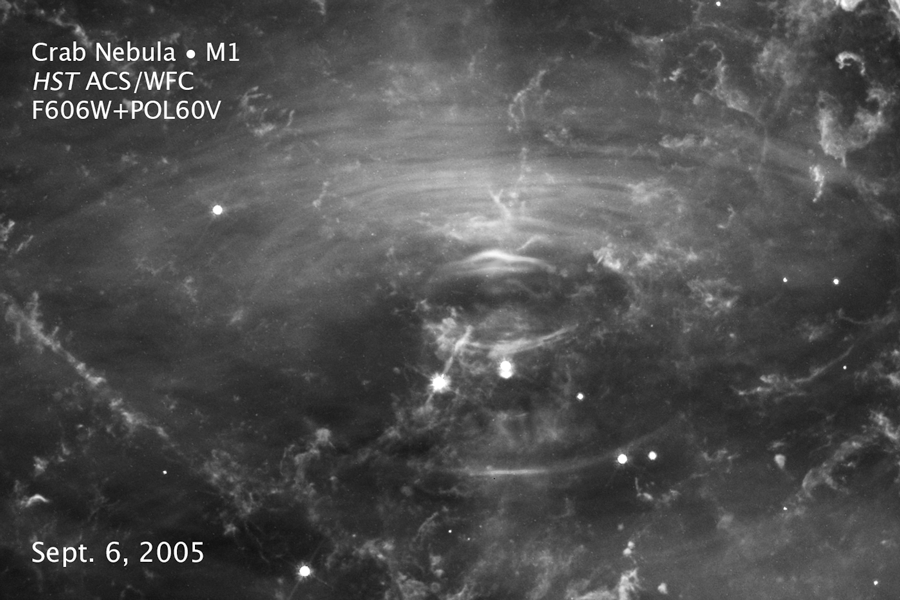Apollo 11 was just one space achievement of many in 1969
There was the Crab Nebula, Apollo 12, and more
NASA and ESA; Acknowledgment: J. Hester (ASU) and M. Weisskopf (NASA/MSFC)
Apollo 11 was the biggest news story of July 20th, 1969. But, the whole year was a bumper crop of mind-blowing space discoveries. One of the better summaries of the year, oddly, is Richard Nixon's January 1970 report to Congress summarizing them. Nixon's image in my mind as a cold, paranoid man is hilarious to square with the sunny tone of the report.
Nevertheless it's a great document filled with outstanding bits of trivia. Nixon happily reports that Apollo 11 successfully landed four and a half minutes ahead of schedule, and splashed into the ocean upon return from the moon 41 seconds earlier than planned.
Nixon also described the Crab Pulsar (pictured above), a neuron star in the Crab Nebula. The pulsar was first detected in November 1968 but confirmed in January 1969. Nixon writes (emphasis mine):
"Space astronomy has made major advances in 1969. Observations of the Sun and other stars are being made in wavelength regions that are inaccessible to astronomers using Earth-based instruments. For example, ballon- and rocket-borne instruments have discovered that the pulsar in the Crab Nebula emits powerful X-ray pulses. Each pulse contains as much energy as could be produced by collecting the entire electrical output of our present terrestrial civilization for 10 million years, but this pulsar produces such an X-ray pulse 30 times each second. The study of such extraordinary extraterrestrial phenomena will lead to a new understanding of physical processes that may help us to improve life on Earth."
To illustrate how cool the Crab Pulsar is, here's a time lapse photograph of it:

Pulses from the pulsar (the bright dot just below the center of the picture) ripple through the Crab Nebula.
NASA and ESA; Acknowledgment: J. Hester (Arizona State University)
The president reported on the three other crewed spaceflights that year, Apollo 9, 10, and 12:
"Apollo 11 was one of four successful manned Apollo flights during the year. Others were Apollo 9, during which a manned LM [lunar module] was first tested in space; Apollo 10, in which an LM carried two astronauts to within 47,000 feet of the lunar surface; and Apollo 12, the second Moon landing mission, which was piloted by the astronauts to a precise landing on the lunar surface on November 19, 1969. In subsequent Apollo launches, the astronauts will stay longer on the lunar surface and carry on more extensive investigations."
Don't sleep on Apollo 12. It launched on November 14th, 1969. The second manned mission to the moon worked on the surface for about eight hours (versus just two and a half hours for Apollo 11). They also lost power during the launch after being struck by lightning but were able to get back online within one minute.





















